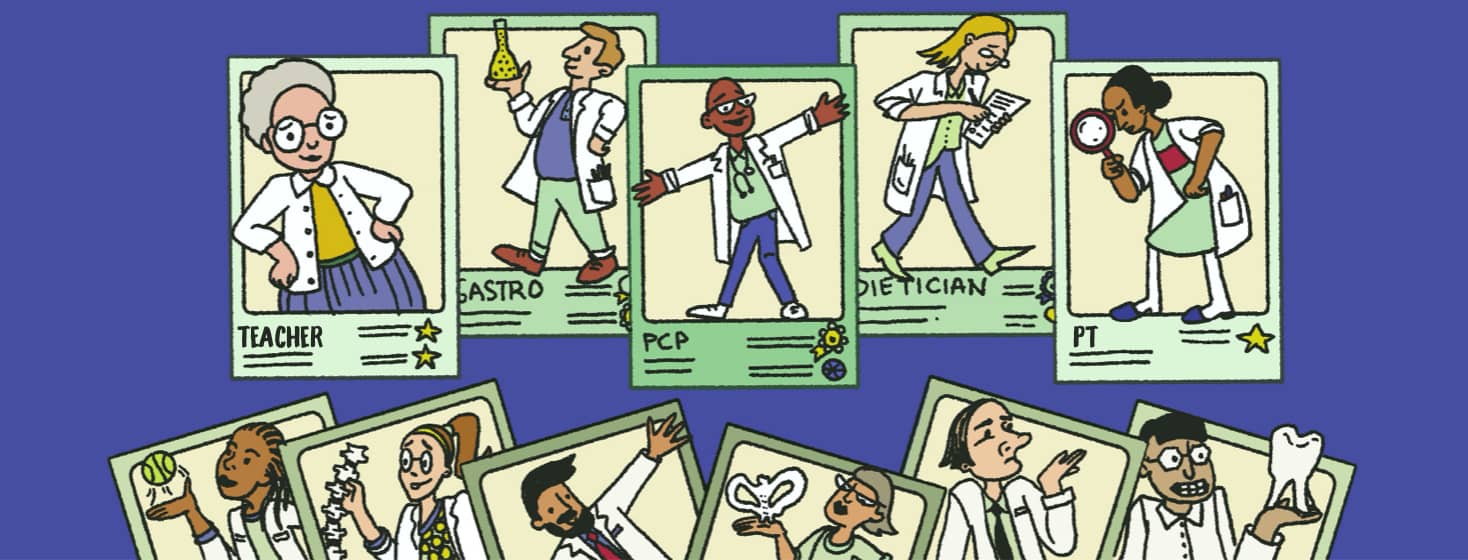Large Medical Team Helps a Child With SMA
When our daughter, Jessie was born we were overjoyed. We were unaware of what was in store for my daughter and our family.
The shock of a SMA diagnosis
Jessie was not meeting her age-related milestones. Jessie was experiencing breathing difficulties due to weak diaphragm muscles. We took her to NYU-Langone Medical Center in New York City where she was diagnosed in their neuromuscular disease center as having spinal muscular atrophy (SMA).
They counseled us on developing a care plan team. Furthermore, they educated us on the possibility of Jessie developing pressure sores due to her limited movement abilities. In addition, they advised us to move her around and place her in alternative positions to alleviate the possibility of developing pressure sores.
Assembling Jessie's medical team
With the help of her pediatric neurologist at the hospital, we put together an SMA care team for her future medical needs. They included a:
- Neuromuscular physician who acted as a gatekeeper for all our other doctors and specialists. They also performed neurological examinations and nerve conduction studies. In addition, they were responsible for developing a plan of care for follow-up treatments.
- Physical therapist worked on developing stretching, range of motion, and weight-bearing exercises, recommending other specialized equipment as needed.
- Occupational therapist focused on activities of daily living such as dressing, eating, breathing, and grooming.
- Speech pathologist, who worked with speech, language, cognition, and swallowing issues as part of our team.
- Genetic counselors worked with our family as needed to explain the genetics of SMA about us having more children with SMA.
- Dietician, whose primary focus was to make sure that our child was consuming adequate nutrition.
- Pediatric pulmonologist who helped with breathing difficulties and respiratory motor functioning. They also recommended Jessie’s possible placement on a ventilator to assist with breathing.
- Respiratory therapist helped make sure that her daily respiratory needs were successfully managed.
Medical issues add more specialists to the team
Due to weak muscles, we were told that she might develop scoliosis. This would cause her spine to curve resulting in her inability to control her head movements and breathing capabilities. Consequently, she was not able to crawl, roll or stand due to SMA.
Consequently, she could not hold her bottle up to her mouth to get nutrition. We added to her team additional specialists such as a gastroenterologist for assistance in her care.
Jessie was a ‘floppy’ baby. Due to having weak muscles, she was unable to develop skills such as rolling over to and from her back.
Adaptive equipment makes school possible
When she was ready to attend school, Jessie was mainstreamed in nursery school. Since she was slender and of average height, she used an adaptive stroller. The adaptive stroller was more comfortable for her. This experience was socially rewarding. It helped her play and interact with other children in nursery school.
When Jessie started kindergarten, she was fitted for a pediatric wheelchair. An IEP was written by the school. An aide was assigned to help her carry and set up her textbooks in classes. The aide attended all specials and other classes Jessie may have had.
By second grade, she was fitted for a pediatric electric wheelchair, which gave her greater independence.
Loved beyond her short life
Jessie had above-average intelligence and maintained a high average in high school. Unfortunately, her health was beginning to fail. Jessie was now homebound, on a ventilator. She continued having home-bound education. Subsequently, she graduated with an Academic High School diploma. Sadly, about two weeks later her tracheostomy pipe ruptured. At seventeen years of age, she suddenly passed away. Her dream was to graduate high school. She reached for many things in her bucket. She is still loved and missed by all that her short life has touched.

Join the conversation